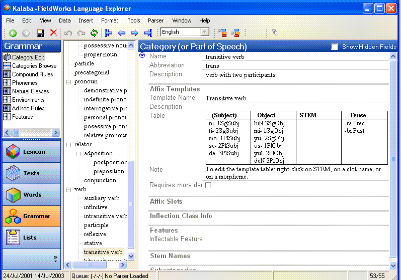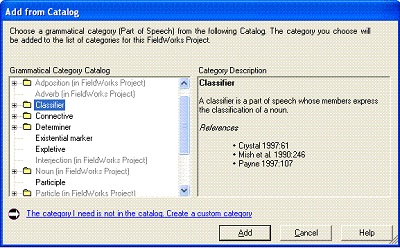Categories
Grammatical Categories
In FieldWorks Language Explorer, grammatical categories are very important. Not only do they fill the traditional “Part Of Speech” tagging role, but they also let us describe:
- How words are put together (which affixes may or must appear, and in what order)
- Inflection Classes (e.g. gender and noun classes)
- What features are borne by morphemes of the category (e.g. person & number)
For more detailed information, please read the Conceptual Introduction to FLEx.
In the screenshot, we see the hierarchical categories system of our made-up test language, Kalaba. On the right side, we see the detail view of the “transitive verb”. Notice the Affix Template, which shows the simple “slot and filler” table used to describe how words of this type are composed, both for documentation purposes as well as constraining the included morphological parser.

When you start a new FieldWorks project, Language Explorer supplies a few, basic grammatical categories. Later, as you find that you need to add more, Language Explorer provides a “grammatical category catalog” to help you find and add categories to your inventory. This catalog is based on the GOLD ontology. Since this catalog is read from an XML file, you could customize that file to reflect the categories used in your area, and then distribute that file to your colleagues.
